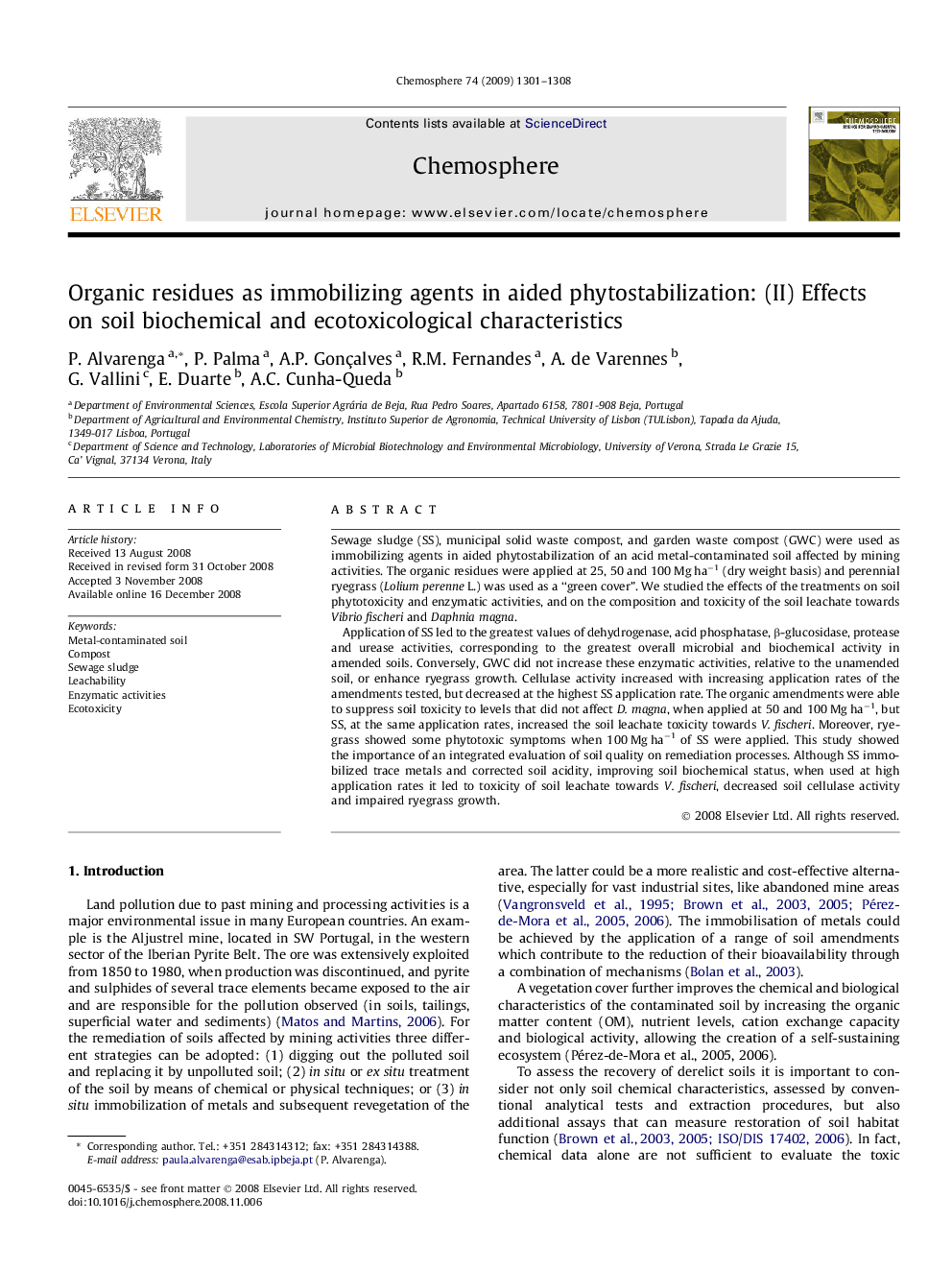| Article ID | Journal | Published Year | Pages | File Type |
|---|---|---|---|---|
| 4413185 | Chemosphere | 2009 | 8 Pages |
Abstract
Application of SS led to the greatest values of dehydrogenase, acid phosphatase, β-glucosidase, protease and urease activities, corresponding to the greatest overall microbial and biochemical activity in amended soils. Conversely, GWC did not increase these enzymatic activities, relative to the unamended soil, or enhance ryegrass growth. Cellulase activity increased with increasing application rates of the amendments tested, but decreased at the highest SS application rate. The organic amendments were able to suppress soil toxicity to levels that did not affect D. magna, when applied at 50 and 100 Mg haâ1, but SS, at the same application rates, increased the soil leachate toxicity towards V. fischeri. Moreover, ryegrass showed some phytotoxic symptoms when 100 Mg haâ1 of SS were applied. This study showed the importance of an integrated evaluation of soil quality on remediation processes. Although SS immobilized trace metals and corrected soil acidity, improving soil biochemical status, when used at high application rates it led to toxicity of soil leachate towards V. fischeri, decreased soil cellulase activity and impaired ryegrass growth.
Related Topics
Life Sciences
Environmental Science
Environmental Chemistry
Authors
P. Alvarenga, P. Palma, A.P. Gonçalves, R.M. Fernandes, A. de Varennes, G. Vallini, E. Duarte, A.C. Cunha-Queda,
